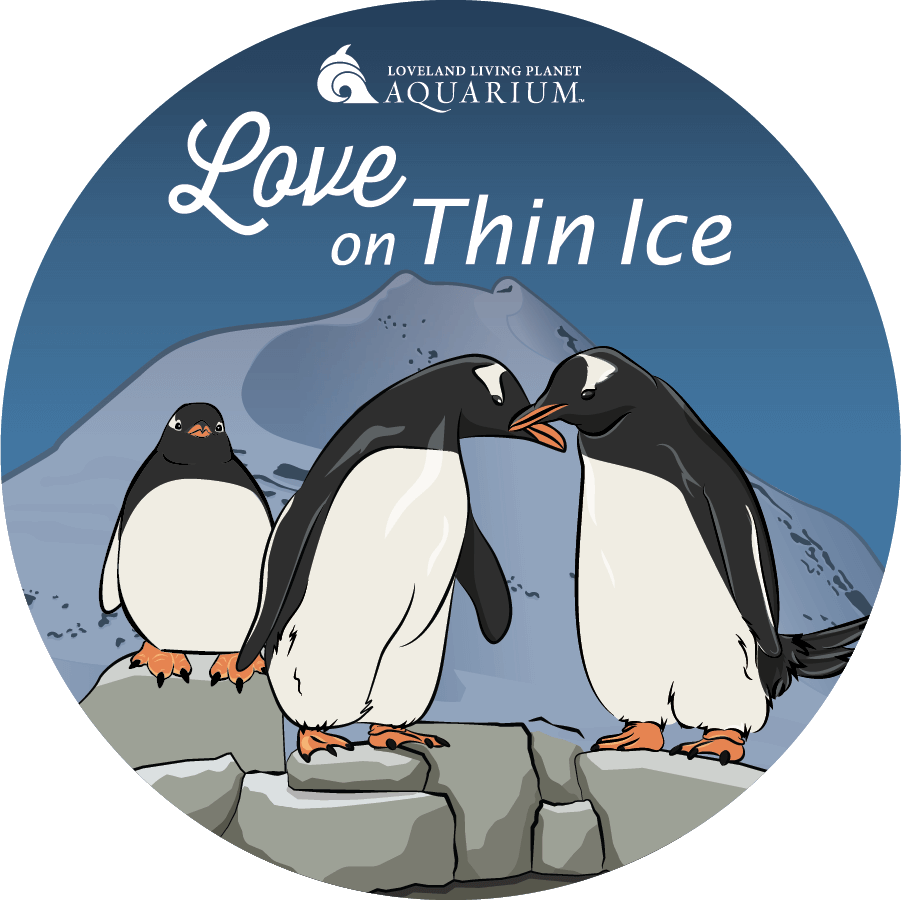
Have you checked out our series about penguin breeding season: Love on Thin Ice? The series follows the love lives of our 20 gentoo penguins as they navigate breeding season 2024. From stealing rocks to stealing partners and learning that some penguins don’t actually mate for life, there is no shortage of drama! Check it out on TikTok, Instagram, and Facebook!
Pygoscelis papua
Fast Facts
- Gentoo penguins are the fastest swimming penguins, with top speeds of 22 miles per hour
- They will eat 10% of their body weight each day.
- Gentoos are the third largest penguin species.
- Penguin knees sit at an angle, so they are always squatting.


Range
Falkland and other Sub-antarctic Islands

Habitat
Marine rocky shores

Size
30 inches tall

Nutrition
Fish, krill, and squid
Characteristics
Gentoo penguins have black and white feathers. They have a distinctive white patch that connects their eyes over the top of their head. Their beak ranges from yellowish to red, depending on their diet. On average, an adult weighs 12 pounds. Gentoo penguins have a distinctly long tail that brushes the ground as they walk. There is no difference in feather coloring between males and females.
Behavior
During their active period, Gentoo penguins live on rocky shores in large colonies. They are excellent swimmers—the fastest of all penguins—which aids them in catching food. An adult Gentoo will dive up to 450 times a day to find food. They have been recorded holding their breath for up to seven minutes. Like many penguins, Gentoos are very vocal, using a range of noises for communicating.
Reproduction
When breeding season begins, the male presents the female with a pebble. If she accepts it, they build a nest together. Females typically lay 2 eggs, which incubate for 34-37 days. The adults take turns incubating the eggs. Chicks rely on their parents for food for at least three months, sometimes longer.

